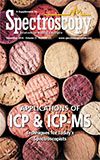Determination of Contaminants in Wine Using an ICP-MS Technique
Special Issues
Strict and steady food control protects consumers against undesired contaminations and guarantees a high level of quality. This can be achieved by enforcing maximum allowable concentrations of hazardous substances. For simultaneous quantitative determination of the inorganic elements in wine, the ICP-MS technique is the preferred quality control tool. ICP-MS offers high sensitivity (trace detection), a wide dynamic range and a high sample throughput. In this study, commercially available red and white wines were investigated; 14 different elements were quantified simultaneously: arsenic, cadmium, caesium, copper, chromium, vanadium, iron, manganese, nickel, lead, selenium, tin, thallium and zinc. The developed ICP-MS method has a high accuracy, regardless of element concentration.
Strict and steady food control protects consumers against undesired contaminations and guarantees a high level of quality. This protection can be achieved by enforcing the maximum allowable concentrations of hazardous substances. For simultaneous quantitative determination of the inorganic elements in wine, inductively coupled plasma–mass spectrometry (ICP-MS) is the preferred quality control tool. ICP-MS offers high sensitivity (trace detection), a wide dynamic range, and a high sample throughput. In this study, red and white wines were investigated and 14 different elements were quantified simultaneously: arsenic, cadmium, cesium, copper, chromium, vanadium, iron, manganese, nickel, lead, selenium, tin, thallium, and zinc. The developed ICP-MS method has a high accuracy, regardless of element concentration.
In the food market, many applications can be found for inductively coupled plasma–mass spectrometry (ICP-MS) methods. A focal point in this market is certainly the simultaneous evaluation of various nutritional elements present in high concentrations (for example, sodium, potassium, calcium, magnesium, and so forth), in combination with the evaluation of trace elements and toxic elements that are present in very low concentrations (such as lead, cadmium, arsenic, mercury, thorium, and selenium). Looking at the food market in Europe, there is a clear dominance by beverage producers-breweries, dairy producers, drinking water producers, distilleries, and wine makers make up a significant part of this market.
Strict and steady control is needed from the harvest to the final product to protect consumers against undesired contaminations and guarantee a high level of quality. This protection can be achieved by verifying the maximum allowable concentrations of hazardous substances. Recent examples are the European drinking water regulation, the European food safety regulations, the food and packaging directive, and the European wine regulation.
“In vino veritas”-in wine there is truth-remarked Pliny the Elder in 79 A.D. about his favorite drink. The Roman Empire treasured wine for more than a thousand years, and, as a matter of fact, wines have been cultivated for more than 8000 years. Nowadays, with approximately 200 million hectoliters per year, the European Union (EU) is a leading producer and a major contributor to global wine production. That’s why next to water and beer, wine is one of the favorite beverages in European countries.
How Wine Is Produced
Winemaking is a rather simple process: Freshly harvested grapes are crushed and the resulting juice (the so-called must) is collected. The must contains fermentable sugars and natural yeasts that, either by themselves or with the help of additional yeast cultures, start the fermentation process, in which mainly ethyl alcohol and carbon dioxide are formed. The latter is a gas and escapes from the must. The fermentation process comes to a halt when all of the sugars are fermented or the alcohol concentration becomes too high and kills off the yeasts. At this point, the must has turned into wine.
A meticulous quality control procedure is essential, and during each stage of the production process analytical methods such as spectroscopy, chromatography, and mass spectrometry are applied for quality assurance or for product characterization. For the quantitative determination of essential elements such as potassium, sodium, calcium, and magnesium as well as undesired components such as copper, lead, arsenic, and cadmium, ICP-MS is the method of choice and enables a fast and precise analytical procedure.
The quality standards for wine analysis are fixed in the national wine regulations such as the German “Weinverordnung” (Bundesgesetzblatt Teil1 Nr. 32) from May 22, 2002, with the latest revision in 2012. It includes the classification of wines from different locations as well as the production process, alcohol concentrations, and the maximum allowable concentrations of the elements. Element distribution, however, shows significant differences depending on geographic origin because the levels of major, minor, and trace elements in wines are related to the soil of the vineyards.
How Wine Is Influenced by Environment
Essential trace elements and in particular undesired heavy metals are present based on the geochemical composition of rocks and soil and the corresponding mineral uptake of the grapevine from the soil. Finally, trace elements also are present in anthropogenic sources such as environmental pollution and agricultural treatment by fertilizers, pesticides, and fungicides.
Last but not least, the metal content in wine can be influenced during wine production, wine processing, conservation, and bottling. The metal content is greater than expected because during the wine making process the grape material is often in prolonged contact with various materials such as stainless steel, wood from a variety of barrels, glass bottles, and other equipment.
Heavy Metals, Wine, and Bordeaux Mixture
Elements like zinc, copper, and iron have an influence on the wine quality. Elevated copper concentrations higher than 1 mg/L result in a metallic bitter taste and may generate turbidity, so concentrations during the production process are always kept below 0.5 mg/L.
Copper in wine originates from a Bordeaux mixture, which is a mixture of copper(II) sulfate (CuSO4) and calcium hydroxide (Ca(OH)2) solution used as a fungicide in vineyards to protect against downy mildew, powdery mildew, and other fungi. Because the Bordeaux mixture has been applied in large quantities, copper has accumulated in the soil and become a pollutant. For this reason, the Bordeaux mixture will probably be banned in the European community in 2016.
Furthermore, the determination of arsenic and lead is important because these elements still can be found accumulated in the soil, generated from lead arsenate (PbHAsO4), which was used as an inorganic insecticide against caterpillars until 1988. Nowadays while officially banned, it is still traceable as a residue in the soil.
ICP-MS Is the Preferred Quality Control Tool
For simultaneous quantitative determination of inorganic elements in wine, ICP-MS is the preferred quality control tool. ICP-MS offers a high sensitivity (trace detection), a wide dynamic range, and a high sample throughput. Even though wine is regarded as a difficult matrix because of the high number of constituents, a system with an octopole collision cell ensures high accuracy for all element measurements. Using helium as a collision gas and running in kinetic energy discrimination (KED) mode, this cell suppresses most spectroscopic interferences (polyatomic interferences). Efficiency of interference suppressions as well as sensitivity are improved using a cooled cyclonic chamber and a well-controlled torch positioning.
Study with Three Red and White Wines
For this study, commercially available red and white Italian wines were evaluated. The three white wines were Gavi, Critone, and Lugana. The three red wines were Montalcino, Chianti, and Magliano.
The study was carried out using a Shimadzu ICPMS-2030 system.
All six wine samples analyzed were diluted 1:3 with 1% nitric acid to reduce ethanol levels to approximately 4%. After this treatment they were directly aspirated for analysis. Next, 14 elements were quantified simultaneously: arsenic, cadmium, cesium, copper, chromium, vanadium, iron, manganese, nickel, lead, selenium, tin, thallium, and zinc. The analytical measurement conditions applied are summarized in Table I.
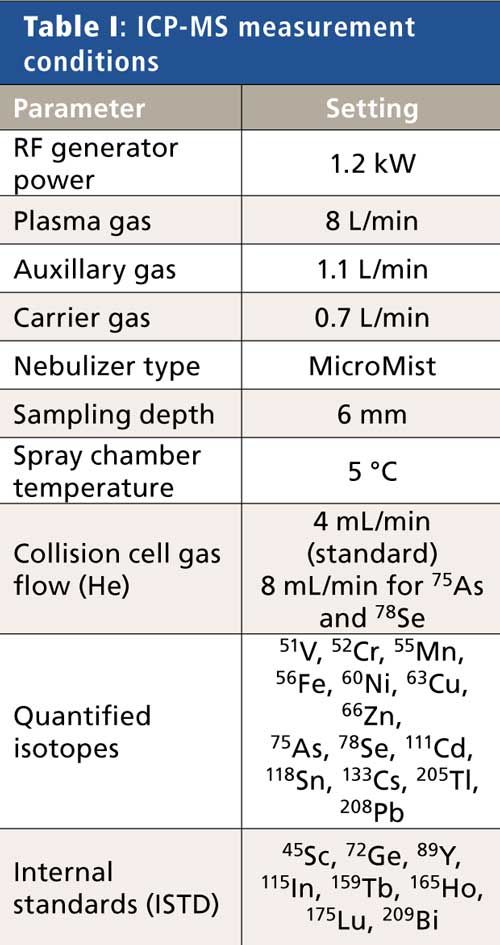
For each element studied, calibration curves were built using five standards in a concentration range of 0.1–500 µg/L. The standards were made using a matrix-matched solution containing 1% nitric acid and 4% ethanol.
All six wine samples were measured in triplicate. Two of the six wines selected (one white wine: Gavi and one red wine: Montalcino) were spiked with 1 ppb or 10 ppb (depending on the element) of the respective elements and measured as a means of additional quality control.
An internal standard solution of 1 µg/L in 1% nitric acid was mixed with the samples before the nebulizer. This was done using the internal standard addition kit. The internal standard contained 45Sc, 72Ge, 89Y, 115In, 159Tb, 165Ho, 175Lu, and 209Bi.
As can be observed in the curves shown in Figure 1, all correlation coefficients (r) were better than 0.9999. Moreover, low values of detection limits (LD), calculated automatically by LabSolution ICP-MS software with a 3σ method, indicate the high ability for trace contaminant analysis of the ICP-MS method used. For each wine, the results are summarized in Table II.

Figure 1: Examples of calibration curves obtained for eight elements.

The results in Table II demonstrate that ICP-MS is able to simultaneously quantify all elements typically present in wine samples, including major elements like iron or manganese and trace elements such as arsenic, thallium, and vanadium.
To demonstrate the method accuracy, some spiking of each element (1 ppb or 10 ppb) was done in a white wine (Gavi) and a red wine (Montalcino). The recovery percentage was then calculated according to the following formula:

Results of the calculations are shown in Table III.
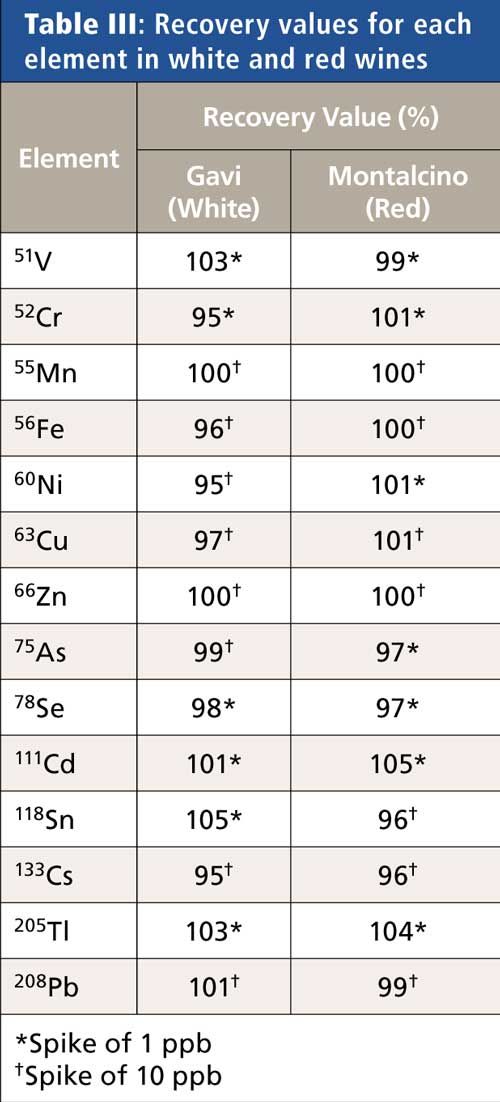
Recovery values for all spiked elements were between 95% and 105%. This spike recovery strongly demonstrates that the method developed with ICP-MS has a high accuracy, regardless of element concentration.
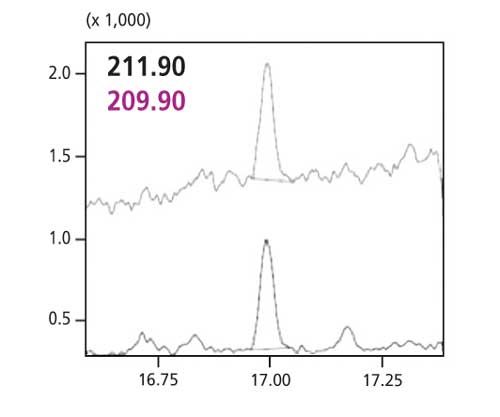
Figure 2: SIM chromatogram of trichloroanisole (TCA) in wine obtained using headspace trap GC (wine spiked with 1 ng/L TCA).
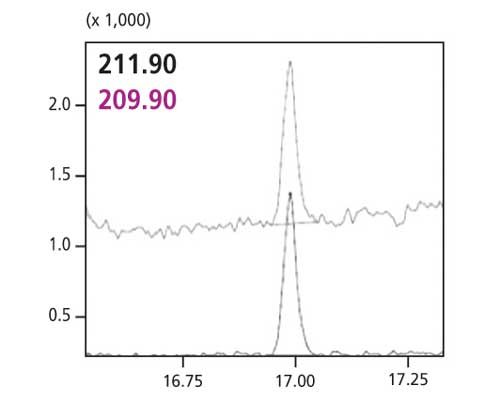
Figure 3: SIM chromatogram of TCA in wine using conventional headspace GC–MS (wine spiked with 100 ng/L TCA).
Summary
ICP-MS is a fast and reliable tool for the determination of heavy metals in wine that can be used to guarantee the highest levels of quality and safety according to the European wine regulations.
Johan Leinders, Uwe Oppermann, and Jan Knoop are with Shimadzu Europa GmbH, in Duisburg, Germany. Ludivine Fromentoux is with Shimadzu France SAS, in Marne La Vallee, France. Direct correspondence to: JLE@shimadzu.eu
High-Speed Laser MS for Precise, Prep-Free Environmental Particle Tracking
April 21st 2025Scientists at Oak Ridge National Laboratory have demonstrated that a fast, laser-based mass spectrometry method—LA-ICP-TOF-MS—can accurately detect and identify airborne environmental particles, including toxic metal particles like ruthenium, without the need for complex sample preparation. The work offers a breakthrough in rapid, high-resolution analysis of environmental pollutants.
Trending on Spectroscopy: The Top Content of 2024
December 30th 2024In 2024, we launched multiple content series, covered major conferences, presented two awards, and continued our monthly Analytically Speaking episodes. Below, you'll find a selection of the most popular content from Spectroscopy over the past year.
